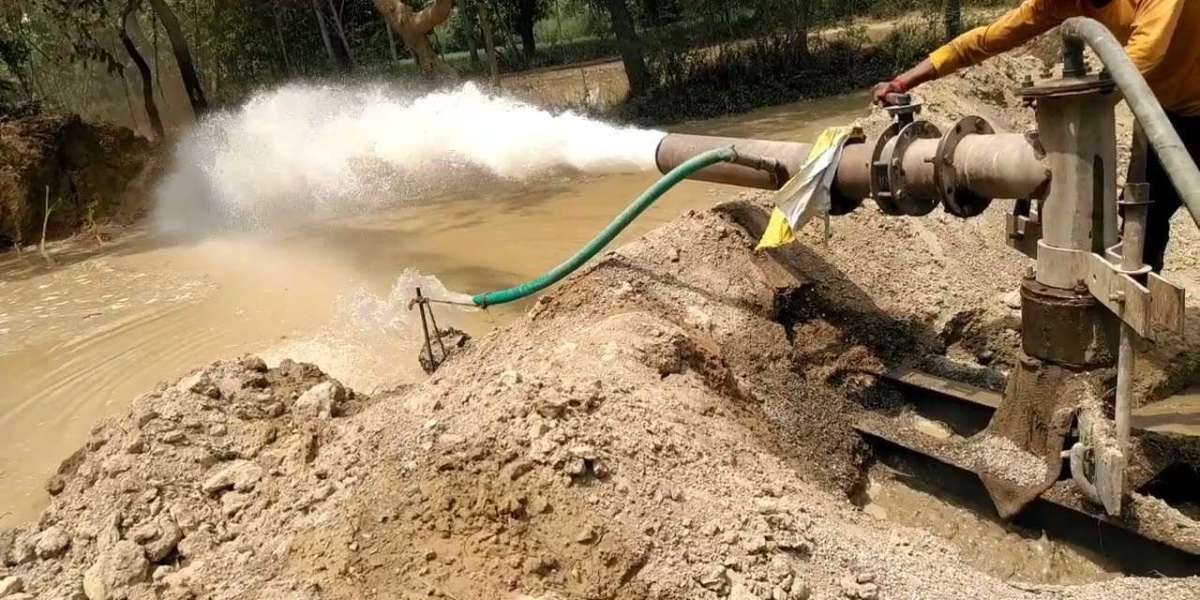Every towering skyscraper, every efficient irrigation system, and every durable bridge begins not at the surface—but beneath it. The unseen groundwork often determines the strength and longevity of entire structures. At the core of this foundation work lie two powerful processes: piling and tubewell drilling. These techniques, often overshadowed by more visible phases of construction, are essential in laying down the groundwork for both civil engineering and agricultural development. Understanding their methods, significance, and technological advancements unveils a fascinating world beneath our feet.
The Power of Piling: A Deep Dive into Structural Stability
Piling is a foundational technique used in construction to support structures by transferring load to a deeper, stronger layer of soil or rock beneath the surface. This method is especially critical in areas where the topsoil is too weak to bear heavy structural loads. Piles, typically made of steel, concrete, or timber, are driven deep into the ground to distribute the building’s weight.
The principle behind piling is not just strength but also stability. Piles help in reducing settlement issues and enhance the durability of the structure by anchoring it into stable layers of earth. There are several types of piles, including end-bearing piles that rest on solid rock and friction piles that transfer load through the friction between the pile and soil.
Piling is not a one-size-fits-all solution. Each site demands a unique assessment of soil type, water table, and intended structure. That’s why geotechnical investigations are conducted before any piling begins. Based on this analysis, engineers choose the right type of pile and method—be it driven piles, bored piles, or screw piles.
Driven vs. Bored Piles: Understanding the Methods
Driven piles are pre-formed and driven into the ground using a hammer or vibratory equipment. This method is fast and suitable for most ground conditions, making it ideal for urban projects and rapid development. Bored piles, on the other hand, involve drilling a hole first and then pouring concrete into the void. This method minimizes vibration and is preferred in areas close to existing structures where soil disturbance must be minimal.
Each technique has its strengths. Driven piles are quicker and cheaper but generate noise and vibrations, while bored piles are quieter and more adaptable to varying depths but may take longer and require more equipment.
The Rise of Tubewell Drilling in Water-Scarce Regions
While piling is key to holding structures above ground, tubewell drilling brings life-sustaining water from below. Tubewell drilling is a method used to access groundwater by sinking a tube or pipe deep into the earth. It has revolutionized agriculture, especially in arid and semi-arid regions where rainfall is scarce or erratic.
Tubewells provide a reliable and independent water source for irrigation, drinking water, and industrial use. The process involves boring into water-bearing strata and installing a casing pipe that supports the well walls. A pump is then used to draw water to the surface. With increasing water demands and climate change, tubewell drilling has become a cornerstone of rural development.
How Tubewell Drilling Works: Step-by-Step Journey to Water
Tubewell drilling starts with site selection, based on hydrogeological surveys to determine the depth and quantity of groundwater. Once the site is finalized, rotary or percussion drilling rigs are used to drill a borehole. A casing pipe is inserted to prevent the walls from collapsing, and a filter or screen is added at the bottom to allow only clean water to pass.
After the setup, test pumping is conducted to check the yield and water quality. Based on the results, an electric or diesel pump is installed. The final outcome is a dependable source of groundwater that can transform dry fields into fertile land and remote areas into habitable zones.
Environmental and Economic Impact of Tubewells
Tubewells have significantly contributed to food security by ensuring uninterrupted irrigation. They empower farmers to grow crops during dry seasons and reduce dependency on erratic rainfall. Economically, they support livelihoods and promote rural prosperity. However, unregulated tubewell drilling can lead to over-extraction of groundwater, causing aquifers to deplete and ecosystems to suffer.
That’s why sustainable drilling practices and regular monitoring are essential. Governments and environmental agencies now advocate for rainwater harvesting and groundwater recharge techniques to replenish the water table alongside tubewell usage.
Technologies Revolutionizing Piling and Tubewell Drilling
Technological advancement has transformed both piling and tubewell drilling from labor-intensive tasks into precision-driven operations. In piling, automated rigs, pile driving simulators, and real-time load testing have enhanced accuracy, efficiency, and safety. Geotechnical software helps in simulating soil behavior and determining the best pile design even before work begins.
In tubewell drilling, GPS mapping, drone surveys, and automated rotary drilling machines have improved borehole placement and reduced human error. Smart sensors now monitor groundwater levels in real-time, helping to manage water usage sustainably. Solar-powered pumps are increasingly being used in tubewells, offering an eco-friendly solution for rural electrification.
Urban Infrastructure and the Role of Piling
In bustling urban environments, the role of piling becomes even more significant. Skyscrapers, subways, bridges, and high-rise apartments all depend on deep foundations to withstand vertical loads, seismic activity, and soil settlement. In cities like New York, Tokyo, and Dubai, some of the tallest buildings in the world rest on thousands of piles driven deep into the ground.
Moreover, piling is not just for new buildings. Retrofitting old structures with piles is a growing practice to extend their life and make them compliant with modern building codes. The adaptability of piling makes it an indispensable part of urban planning and infrastructure renewal.
Rural Development and Tubewell Drilling: Bridging the Gap
In contrast to piling’s dominance in cities, tubewell drilling is shaping rural landscapes. Villages that once faced water shortages can now cultivate crops, store water, and improve sanitation—all thanks to deep borewells. It’s a game-changer for regions with limited access to surface water bodies.
Development programs led by governments and NGOs focus on providing subsidized or community-based tubewells in marginalized areas. These efforts not only increase agricultural output but also improve public health by reducing dependency on contaminated water sources. In disaster-prone areas, tubewells serve as crucial backups during droughts and floods.
Challenges in Piling and Tubewell Drilling
Despite their benefits, both piling and tubewell drilling face challenges. In piling, common issues include equipment failure, noise pollution, vibration damage, and unexpected soil conditions. These can delay projects and increase costs. To overcome this, comprehensive soil surveys and equipment maintenance are vital.
Tubewell drilling, on the other hand, must deal with salinity, low recharge rates, contamination, and equipment wear and tear. Untrained drilling can lead to poor borehole alignment and reduced water output. Additionally, excessive groundwater use in agriculture contributes to water scarcity and soil degradation.
Addressing these challenges requires skilled manpower, continuous training, and strict regulation. Sustainability is key in ensuring that both these powerful technologies serve long-term goals without harming the environment.
Future Prospects: Innovation and Sustainability
The future of piling and tubewell drilling lies in embracing innovation and sustainable practices. In piling, prefabricated piles made from recycled materials are gaining popularity. Artificial intelligence and machine learning are being integrated into construction planning to predict soil behavior and optimize foundation design.
For tubewell drilling, smart irrigation systems, real-time water management apps, and community-based groundwater governance are emerging trends. These developments ensure that the benefits of tubewell technology are not overshadowed by ecological harm.
Furthermore, as climate change intensifies, both piling and tubewell drilling will need to adapt to changing soil conditions and shifting water tables. Resilient infrastructure begins underground, and so the emphasis on smart foundations and water solutions will only grow.
Conclusion: A Silent Revolution Below Our Feet
Piling and tubewell drilling may not always capture public attention, but their impact is monumental. They provide the unseen strength beneath our buildings and the hidden life source for our crops. From deep foundations in the heart of cities to water lifelines in remote villages, these technologies are silently shaping a better, stronger, and more sustainable world.
As we look to the future, the importance of investing in quality groundwork—both in construction and agriculture—cannot be overstated. Because true progress doesn’t just rise up; it also digs deep.



